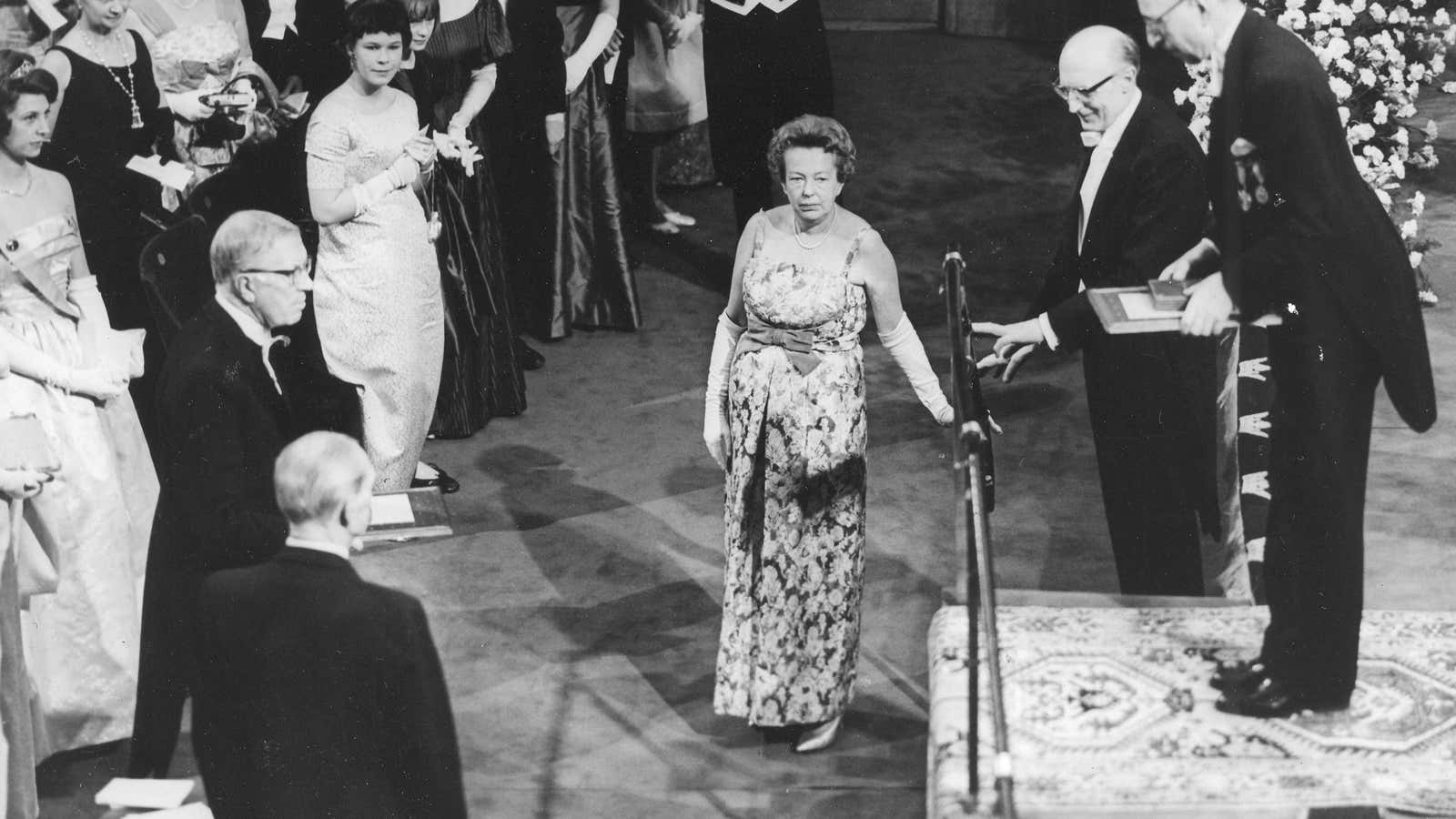Canadian laser physicist Donna Strickland became the 209th scientist to win the Nobel Prize in physics on Oct. 2. She is only the third who is also a woman, and the celebration of her achievement also highlighted the apparent double standard that female scientists still face. Wikipedia rejected a biographical entry about her earlier this year, claiming she wasn’t yet notable enough. Observers questioned on Twitter why the University of Waterloo still hasn’t given her the title of full professor (for which Strickland, it turns out, has never applied).
Grating as that feels in 2018, the frustrations facing the previous female scientist to win the physics Nobel 55 years ago are even more appalling. (The third, earliest female laureate was Marie Curie.) The German-born theoretical physicist Maria Goeppert-Mayer did not receive a salaried position as a physicist until 1959, just four years before winning the 1963 Nobel for her work on nuclear shell structure.
Goeppert-Mayer and her husband Joseph Mayer, a physical chemist, emigrated to the US in the 1930s, where Mayer found a professorship at Johns Hopkins University. The university refused to hire a woman during the Depression—as family breadwinners, it was thought, men needed jobs more—and so Goeppert-Mayer worked unpaid from an unused office on campus, producing 10 papers and one textbook without collecting a paycheck. She did the same thing when Mayer moved to Columbia University.
When Mayer was offered a job at the University of Chicago, the university offered Goeppert-Mayer a professorship at the Institute for Nuclear Studies—and, again, no salary. She was elected to the National Academy of Sciences and worked at the US Argonne National Laboratory. It wasn’t until 1959 that she and her husband were both offered full, paying professorships, at the University of California, San Diego.
They moved there with their two children. When she was named a Nobel laureate in November 1963 her local newspaper ran the headline: “S.D. Mother Wins Nobel Physics Prize.”
The GE Foundation now sponsors an award in Goeppert-Mayer’s name that honors an early career female scientist and provides money for her to travel to conferences to present her work.
Despite the sexism that the few female science Nobel laureates have faced, discrimination has kept many more from ever being honored in the first place. Lise Meitner would probably have shared the 1944 physics prize, had her collaborator Otto Hahn not omitted her name from their joint research while she was in exile from the Nazis.
Meitner, co-discoverer of nuclear fission, was told by a lab director early in her career that he could not accept female students, lest their hair catch fire on a Bunsen burner.
